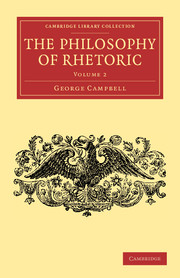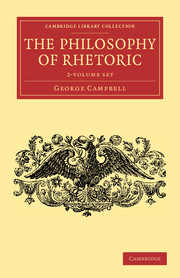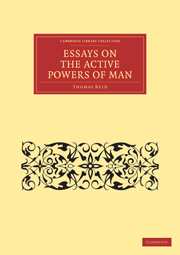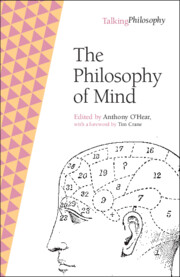The Philosophy of Rhetoric
A leading figure of the Scottish Enlightenment, George Campbell (1719–96) began to write what was to become his most famous work, The Philosophy of Rhetoric, soon after his ordination as a minister in 1748. Later, as a founder of the Aberdeen Philosophical Society, he was able to present his theories, and these discourses were eventually published in 1776. In the spirit of the Enlightenment, Campbell combined classical rhetorical theory with the latest thinking in the social, behavioural and natural sciences. A proponent of 'common sense' philosophy, he was particularly interested in the effect of successful rhetoric upon the mind. Published in two volumes, the work is divided into three books. Volume 2 contains the concluding part of Book 2 and all of Book 3, which shows the author at his most intricate, expanding upon the correct selection, number and arrangement of words required for successful argument.
Product details
October 2013Paperback
9781108063883
458 pages
216 × 140 × 26 mm
0.58kg
Available
Table of Contents
- 5. Of the qualities of style strictly rhetorical
- 6. Of perspicuity
- 7. What is the cause that nonsense so often escapes being detected, both by the writer and by the reader
- 8. The extensive usefulness of perspicuity
- 9. May there not be an excess of perspicuity?
- Part III. The Discriminating Properties of Elocution:
- 1. Of vivacity as depending on the choice of words
- 2. Of vivacity as depending on the number of the words
- 3. Of vivacity as depending on the arrangement of the words
- 4. Of the connectives employed in combining the parts of a sentence
- 5. Of the connectives employed in combining the sentences in a discourse.






